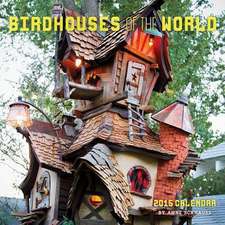Nervous System Regeneration in the Invertebrates: Zoophysiology, cartea 34
Autor Stacia B. Moffeten Limba Engleză Paperback – 14 dec 2011
Din seria Zoophysiology
- 15%
 Preț: 647.92 lei
Preț: 647.92 lei - 15%
 Preț: 638.76 lei
Preț: 638.76 lei - 15%
 Preț: 638.24 lei
Preț: 638.24 lei - 15%
 Preț: 641.38 lei
Preț: 641.38 lei - 15%
 Preț: 634.82 lei
Preț: 634.82 lei -
 Preț: 386.61 lei
Preț: 386.61 lei - 15%
 Preț: 636.94 lei
Preț: 636.94 lei - 15%
 Preț: 640.88 lei
Preț: 640.88 lei - 15%
 Preț: 635.47 lei
Preț: 635.47 lei - 15%
 Preț: 637.78 lei
Preț: 637.78 lei - 15%
 Preț: 640.88 lei
Preț: 640.88 lei -
 Preț: 386.61 lei
Preț: 386.61 lei - 15%
 Preț: 637.78 lei
Preț: 637.78 lei - 15%
 Preț: 638.24 lei
Preț: 638.24 lei - 15%
 Preț: 642.83 lei
Preț: 642.83 lei - 15%
 Preț: 634.68 lei
Preț: 634.68 lei - 15%
 Preț: 642.83 lei
Preț: 642.83 lei - 18%
 Preț: 999.60 lei
Preț: 999.60 lei - 15%
 Preț: 639.41 lei
Preț: 639.41 lei - 15%
 Preț: 638.43 lei
Preț: 638.43 lei - 15%
 Preț: 651.34 lei
Preț: 651.34 lei - 15%
 Preț: 638.57 lei
Preț: 638.57 lei - 15%
 Preț: 637.46 lei
Preț: 637.46 lei - 15%
 Preț: 637.59 lei
Preț: 637.59 lei - 15%
 Preț: 641.53 lei
Preț: 641.53 lei -
 Preț: 386.22 lei
Preț: 386.22 lei - 15%
 Preț: 632.55 lei
Preț: 632.55 lei - 15%
 Preț: 695.19 lei
Preț: 695.19 lei -
 Preț: 401.24 lei
Preț: 401.24 lei - 18%
 Preț: 942.01 lei
Preț: 942.01 lei - 18%
 Preț: 945.30 lei
Preț: 945.30 lei - 15%
 Preț: 652.17 lei
Preț: 652.17 lei - 15%
 Preț: 632.70 lei
Preț: 632.70 lei - 15%
 Preț: 640.71 lei
Preț: 640.71 lei - 15%
 Preț: 644.30 lei
Preț: 644.30 lei - 15%
 Preț: 642.68 lei
Preț: 642.68 lei
Preț: 636.80 lei
Preț vechi: 749.19 lei
-15% Nou
Puncte Express: 955
Preț estimativ în valută:
121.85€ • 127.22$ • 100.85£
121.85€ • 127.22$ • 100.85£
Carte tipărită la comandă
Livrare economică 04-18 aprilie
Preluare comenzi: 021 569.72.76
Specificații
ISBN-13: 9783642798412
ISBN-10: 3642798411
Pagini: 224
Ilustrații: XII, 208 p.
Dimensiuni: 155 x 235 x 12 mm
Greutate: 0.32 kg
Ediția:Softcover reprint of the original 1st ed. 1996
Editura: Springer Berlin, Heidelberg
Colecția Springer
Seria Zoophysiology
Locul publicării:Berlin, Heidelberg, Germany
ISBN-10: 3642798411
Pagini: 224
Ilustrații: XII, 208 p.
Dimensiuni: 155 x 235 x 12 mm
Greutate: 0.32 kg
Ediția:Softcover reprint of the original 1st ed. 1996
Editura: Springer Berlin, Heidelberg
Colecția Springer
Seria Zoophysiology
Locul publicării:Berlin, Heidelberg, Germany
Public țintă
ResearchCuprins
1 The Phenomenon of Neural Regeneration.- 1.1 How Shall We Define Neural Regeneration?.- 1.2 Replacement of Neurons.- 1.3 Regrowth of Neurites.- 1.4 A Cost-Benefit Analysis of Neural Regeneration.- 1.5 Rationale for Studying Invertebrate Regeneration.- 1.6 Conclusions.- 2 A Survey of Neural Repair in Invertebrates.- 2.1 Introduction.- 2.2 Cnidaria: Neural Structure and Behavior.- 2.3 Ctenophora: Comb Jellies.- 2.4 Platyhelminthes: The Simplest Bilateral Nervous System.- 2.5 Nemertea: Ribbon Worms.- 2.6 Nematoda: Roundworms.- 2.7 Annelida: Introduction to the Phylum.- 2.8 Arthropoda: Neural Organization and Repair.- 2.9 Mollusca: Unsegmented Animals with a Range of Cephalization.- 2.10 Echinodermata: The Spiny Deuterostomes.- 2.11 Chordata: Our Own Phylum.- 3 Early Responses to Neural Injury.- 3.1 Introduction.- 3.2 Immediate Responses of Injured Neurons.- 3.3 Growth Following Axotomy.- 3.4 Survival of Anucleate Axon Segments.- 3.1 Responses of Nonneural Cells to Injury.- 3.2 What Activates Responses in Uninjured Neurons?.- 3.3 Conclusions.- 4 Pathfinding by the Growth Cone.- 4.1 Introduction.- 4.2 Growth Cone Morphology.- 4.3 Growth Cone Extension.- 4.4 Ion Channels in the Growth Cone.- 4.5 Responses of Growth Cones to Neurotransmitters.- 4.6 Differentiation Following Growth Cone Interactions.- 4.7 Receptors and Molecular Cues in the Environment.- 4.8 Conditioned Medium and Growth Promotors.- 4.9 Designing Culture Conditions.- 5 Synapse Formation and Alteration During Regeneration.- 5.1 Introduction.- 5.2 The Road to Recovery.- 5.3 How Neurons Select Targets.- 5.4 Development of a Functioning Synapse.- 5.5 The Role of Competition.- 5.6 Conclusions.- References.
Recenzii
"...an excellent and long-overdue summary of cell-body and axonal regeneration of neurons in many invertebrate phyla." TINS







